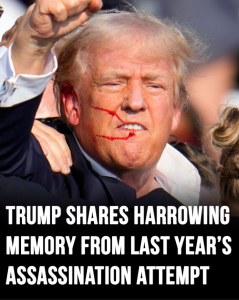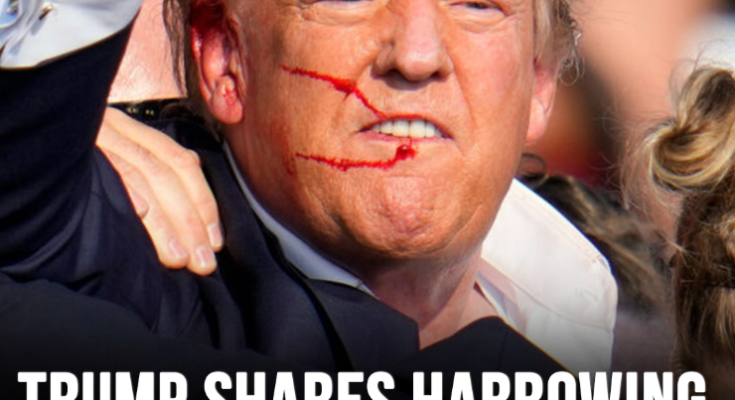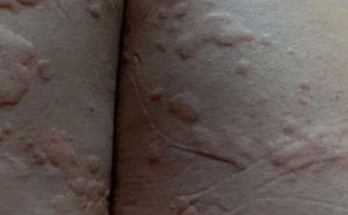Trump Details How He Escaped Death — And Who Saved Him
It was supposed to be another high-energy campaign stop. On July 13, 2024, Donald Trump stood before a crowd of supporters in Butler, Pennsylvania, delivering one of his signature speeches. The sun hung low in the sky, casting golden light across the rally grounds. People waved flags, chanted slogans, and cheered every line. No one knew that within minutes, history would take a shocking turn.
Trump was mid-sentence when his hand reached toward a large chart displaying immigration statistics. He turned his head slightly to the right, glancing at the board to emphasize his point. In that precise instant, a crack of gunfire rang out — loud, sharp, and terrifying. Chaos erupted.
From a rooftop roughly 400 feet away, the shooter — later identified as Thomas Matthew Crooks — had aimed an AR-15–style rifle at the stage. One bullet tore through the air, grazing the upper right portion of Trump’s ear. The force of it ripped flesh, sent blood streaming down his cheek, and very nearly ended his life.
The scene shifted in seconds from celebration to panic. People screamed and ducked for cover. Secret Service agents, trained for exactly this moment, lunged forward, forming a human shield around the former president. They pushed him down behind the podium, their eyes scanning for the threat, their hands on weapons. Shots rang out in return. The shooter was quickly neutralized.
Trump would later describe what happened in vivid detail. He recalled hearing the distinct “whizzing” of the bullet just before it struck, feeling a burning sensation, and realizing almost immediately that he had been hit. But in that instant, he also realized something else: if he had not turned his head toward the chart at that exact moment, the bullet likely would have struck a far more lethal spot — possibly the side of his skull.
“The chart saved my life,” Trump would later tell audiences. “If I hadn’t moved, if I had been looking straight ahead, I wouldn’t be here.” He credited that unplanned motion — just a matter of inches — with altering the bullet’s trajectory.
Still crouched behind the podium, agents checked his wound, deciding he could be moved. Blood covered his hand and cheek, but Trump insisted on standing. With the crowd watching in shock, he rose, his fist pumping in defiance, a gesture that would soon become one of the most iconic images of his political career.
But when Trump talks about that day, he doesn’t stop at the chart or the agents. He says the most decisive factor was something greater — divine protection. In multiple speeches, interviews, and conversations since, he has pointed to his faith as the reason he survived.
“I felt very safe because I had God on my side,” he told supporters. At the Republican National Convention, he declared that “if I had not moved my head at that very last instant, the assassin’s bullet would have hit its mark. But God had other plans.”
Many around him echoed that sentiment. His press secretary, Karoline Leavitt, described the shooting as part of a battle between “evil forces” and divine grace, saying that “President Trump was saved by the grace of God.” Republican leaders offered similar words. Speaker Mike Johnson simply stated, “God protected President Trump yesterday.” Representative Carlos Giménez called it “the grace of God,” while Ivanka Trump, visibly emotional, suggested that her late mother had been watching over him from above.
This narrative of divine intervention resonated strongly with his base. In the days following the incident, Trump’s survival was portrayed not just as luck, but as proof that his mission — to, in his words, “fix the broken country” — was divinely sanctioned. Supporters posted images of the bloodied but defiant Trump with captions about faith, destiny, and courage.
While the faith-based interpretation stirred public emotion, the practical truth was that his survival also depended on the rapid and disciplined actions of the Secret Service. The agents on stage with him reacted within fractions of a second, shielding his body, assessing his injury, and escorting him from danger. Their training kicked in seamlessly.
One particularly striking photograph, taken by Associated Press photographer Evan Vucci, captured the exact moment after Trump emerged from behind the podium — blood on his face, agents gripping his arms, and his fist raised high. That image, broadcast worldwide, crystallized the day into a single frame: a mix of violence, survival, and defiance.
Beyond the personal survival, there was the human cost. In the crowd that day, firefighter Corey Comperatore lost his life shielding his family from gunfire. Two others were critically injured. Trump would later speak about them with solemnity, calling Comperatore “a true hero” and promising to honor his memory.
As weeks passed, the event took on an almost mythic role in Trump’s campaign. It was no longer just a near-assassination; it became a story of resilience, providence, and renewed purpose. Trump’s tone shifted slightly in speeches. While still combative, he injected more moments of reflection, speaking about life’s fragility and the importance of seizing the moment.
“I shouldn’t be here,” he said in one rally afterward. “But I am — and maybe that means I’m here to finish the job.” That line would send crowds into roars of applause.
The attempted assassination also deepened the protective loyalty of his supporters. They saw in him not just a politician, but a man who had stared death in the face and emerged stronger. For them, the incident was proof of both his toughness and his destiny.
Political analysts noted how quickly the event became central to his campaign narrative. In fundraising emails, rally speeches, and interviews, the story was told and retold — always with the elements of the chart, the split-second head turn, the agents’ courage, and the hand of God. Each retelling reinforced the themes of fate and survival.
For Trump himself, the memory of that day remains etched in every detail. He remembers the sound of the crowd before the shot, the sudden silence after, the metallic tang of blood, the press of agents around him, and the sting of the wound. He remembers the look in the eyes of the people in the front row — fear mixed with disbelief. And he remembers standing up, refusing to be carried away, because in that moment he wanted to send a message: that he would not be broken.
Months later, in interviews, Trump still speaks of it with both gravity and pride. He often ends the story by naming those who, in his view, saved him: the Secret Service agents who shielded him, the immigration chart that made him turn his head, and above all, God.
Whether one sees it as divine intervention, extraordinary luck, or a combination of skill and timing, the fact remains: on July 13, 2024, Donald Trump came within inches of losing his life. That he didn’t has shaped not only the rest of his campaign, but the way his supporters — and perhaps even his opponents — will remember him.
In the end, the story is as much about survival as it is about symbolism. The blood on his cheek, the clenched fist in the air, the unwavering stance under fire — all of it became part of a moment that blurred the line between political theater and mortal danger. And for Donald Trump, it became the clearest possible proof, in his own mind, that he was meant to carry on.



